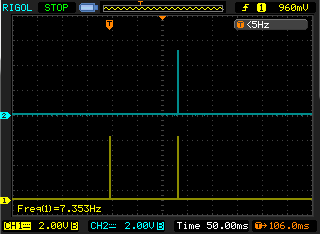
Needless to say, there’s a world of difference between the expensive DSLR cameras professional photographers use and the point-and-shoot models carried by commoners. One such difference is the ability to use slave flashes – a second flash set off to the side of the subject for better illumination. Most of these slave flash units are triggered when they see a bright light, or when the on-camera flash goes off. Point and shoot models usually have a ‘pre-flash’ that cause a slave flash to trigger prematurely. [Kerry] built a really neat slave flash that is able to work with these point-and-shoot cameras, and is pretty easy to build as well.
There are two options when it comes to building a flash that can work with a point-and-shoot: First, measure the time between the pre-flash and real flash, and then simply delay the slave flash. This option has a few problems. Even when [Kerry] tested this technique on the same camera, the delay between the flashes were never consistant.
The second option is to simply ignore the pre flash and synchronize with the main flash. This is a little harder, but if done right this technique is nearly foolproof.
[Kerry] ended up building a small circuit out of a 556 timer chip and an LM339n comparator that turns itself ‘on’ just a little bit after it sees the pre flash. From there, the device looks for the main flash and triggers itself whenever it sees another bright source of light.
The finished product works beautifully, and is simple enough for just about anyone to build on a piece of perf board.















Wein also makes a bunch of sllave triggers that do this for you if you dont want to build one. I found a list on-line which have the pre-trigger ignore capability.
Wein HS-XL D Hot Shoe Ultra Slave
Wein PN-XL D Peanut Ultra Slave
Wein L8 D Micro Slave
Wein XL8 D Micro Ultra Slave
I am probably going to end up building one of these, but i will be counting the number of flashes. Most compacts use 2 flashes but some have several before the main flash. I would simply make it selectable as to how many flashes it will see before firing.
Most of these cheaper cameras I have seen have the ability to turn off the pre-flash(es).
However, I am not sure what the advantage gained here. If the pref-lash is for metering, that is rendered useless by employing a slave flash that does not flash for the pre-flash and then does flash for the final exposure. I was under the impression that the pre-flash(es) were done for the purpose of red eye reduction, in which case the slave flash wouldn’t not adversely affect the digital image.
I would think power wouldn’t be too much of a problem when building a slave flash, so why not have it flash with every flash of the camera’s flash? Is it because there is too much residual light to detect each flash?
Not owning a cheap digital, but having much experience with SLR (film) and DSLR what say the owners of the less expensive digital cameras, What model, and what is the purpose of the pre-flash?
At least some accessory flashes (such as the one I have) have a cycle time that’s a good bit longer than the time between the usual pre-flash and flash — it completely dumps the capacitors on each flash and takes a while to recharge them. So, if it goes off at the pre-flash, it can’t then also go off for the main flash.
Ah, that would be a problem. All of my flashes can be set for multiple flashes, and several can handle multiple and repeated flash rates of several times a second. My old film camera, flash and winder, (from 1981) could take 3.5 frames a second, with the flash I have. It did require an external power source (Power Grip) to do that for more than a few seconds, because it ate batteries.
Just add a secondary set of Caps to charge the Flash caps between flashes! This is Hack a Day after all.
8^)
My point-n-shoot camera (a Canon A95) will only flash once when it is set on manual exposure. I have used it with an external flash triggered by a regular optical slave.
I’ve made simple slave flash trigger for approx 10$ and it works with shutter time up to 1/1000 of second: http://frenki.net/2012/09/simple-diy-slave-flash-trigger-for-your-camera/